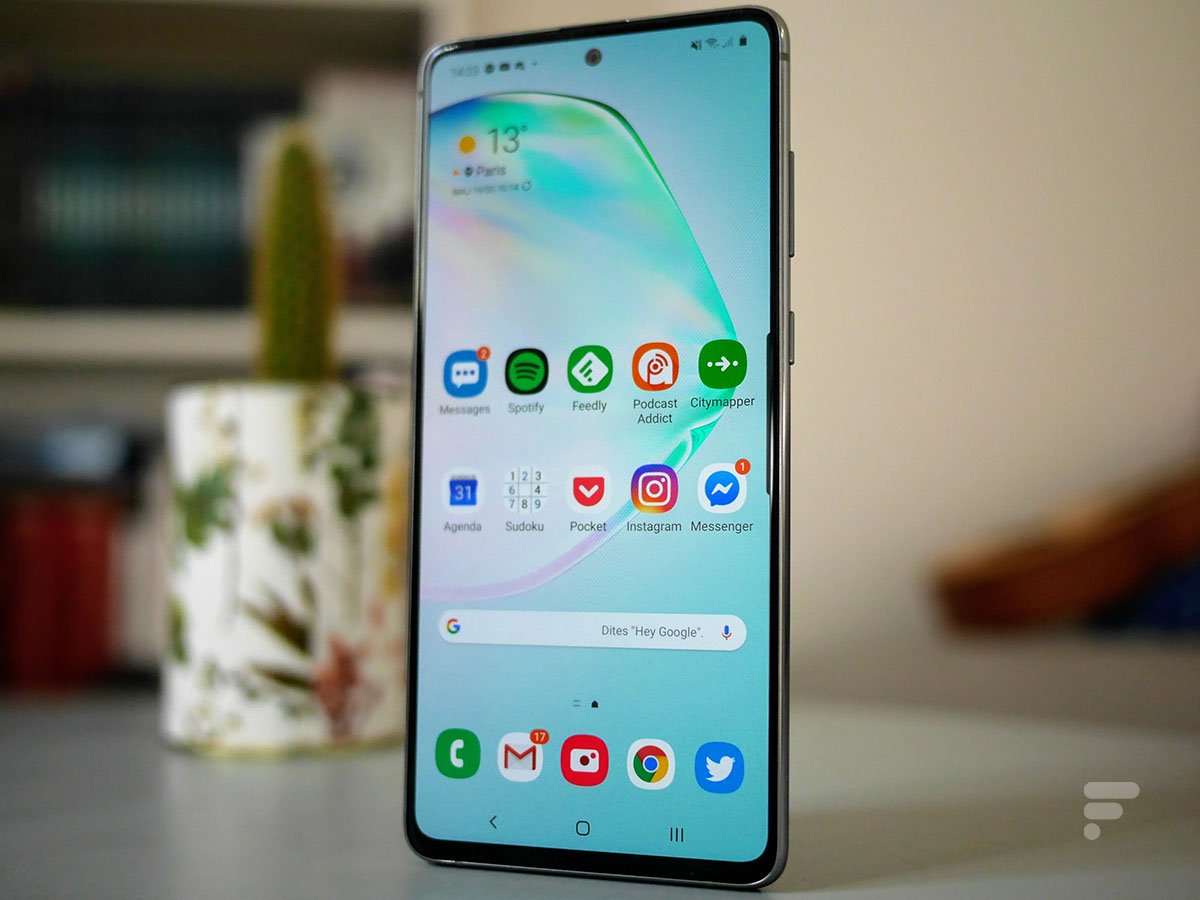A light note for this Note Lite?
7/10
Editor’s noteRead the conclusion of the testSee the product sheetAvailable at 499 € at Boulanger
The Samsung Galaxy Note 10 Lite is a mid-range smartphone announced in January 2020. It is equipped with a 6.7-inch Super AMOLED screen with a fingerprint reader under the screen, a Samsung Exynos 9810 SoC found on the Galaxy S9 and a versatile triple photo back sensor (ultra wide-angle and telephoto).Where to buy the SAMSUNG GALAXY NOTE 10 LITE at the best price?
Contents
INTRODUCTION
Six months after its big brothers, Samsung unveiled the Galaxy Note 10 Lite, a smartphone sold as a real Galaxy Note with its integrated S Pen, but reduced performance for a more affordable price. But what is it worth in use? This is what we will see in this complete test.
The Samsung Galaxy Note 10 Lite
Samsung may have recently launched its Galaxy S20 , S20 Plus and S20 Ultra , the Korean manufacturer does not forget its previous high-end models. After launching the Galaxy Note 10 and Note 10 Plus last August , there was still a missing model. The Samsung Galaxy Note 10 Lite was finally launched in France at the end of January and it really has everything from the Note range. But besides his stylus, what is it worth in use? This is what we will see in this complete test.
TECHNICAL INFORMATION SHEET OF SAMSUNG GALAXY NOTE 10 LITE
| Model | Samsung Galaxy Note 10 Lite |
|---|---|
| OS version | Android 10 Q |
| Manufacturer interface | Samsung One UI |
| Screen size | 6.7 inches |
| Definition | 2400 x 1080 pixels |
| Technology | Super AMOLED |
| SoC | Exynos 9810 |
| Graphics chip (GPU) | ARM Mali G72 MP18 |
| Random access memory (RAM) | 6 GB |
| Internal memory (flash) | 128 GB |
| Camera (back) | Sensor 1: 12 Mpx Sensor 2: 12 Mpx Sensor 3: 12 Mpx |
| Camera (front) | 32 MP |
| Video recording | 4K @ 60 IPS |
| Wireless | Wi-Fi 5 (ac) |
| Bluetooth | 5.0 |
| Supported bands | 2100 MHz (B1), 800 MHz (B20), 1800 MHz (B3), 2600 MHz (B7), 700 MHz (B28) |
| NFC | Yes |
| Fingerprint sensor | Under the screen |
| Ports (inputs / outputs) | USB Type-C |
| Drums | 4500 mAh |
| Dimensions | 76.1 x 163.7 x 8.7mm |
| Weight | 198 grams |
| Colors | Black, Silver, Red |
| Price | € 499 |
| Product sheet |
This test was carried out using a copy provided by the brand.
AN IMPOSING SMARTPHONE, BUT A GOOD GRIP
If the Galaxy Note 10 Lite takes the name of the Galaxy Note 10, it mainly suggests a family link with the new range of Samsung smartphones in 2020, whether it is the Galaxy A51 , Galaxy A71 or Galaxy S20, S20 Plus and S20 Ultra.
In fact, the phone incorporates two features of this year’s Samsung models. On the front, it offers a screen without a notch, but with a hole at the top in the middle of the screen for the selfie camera. On the back, it sports a fairly large photo module on two rows of sensors.
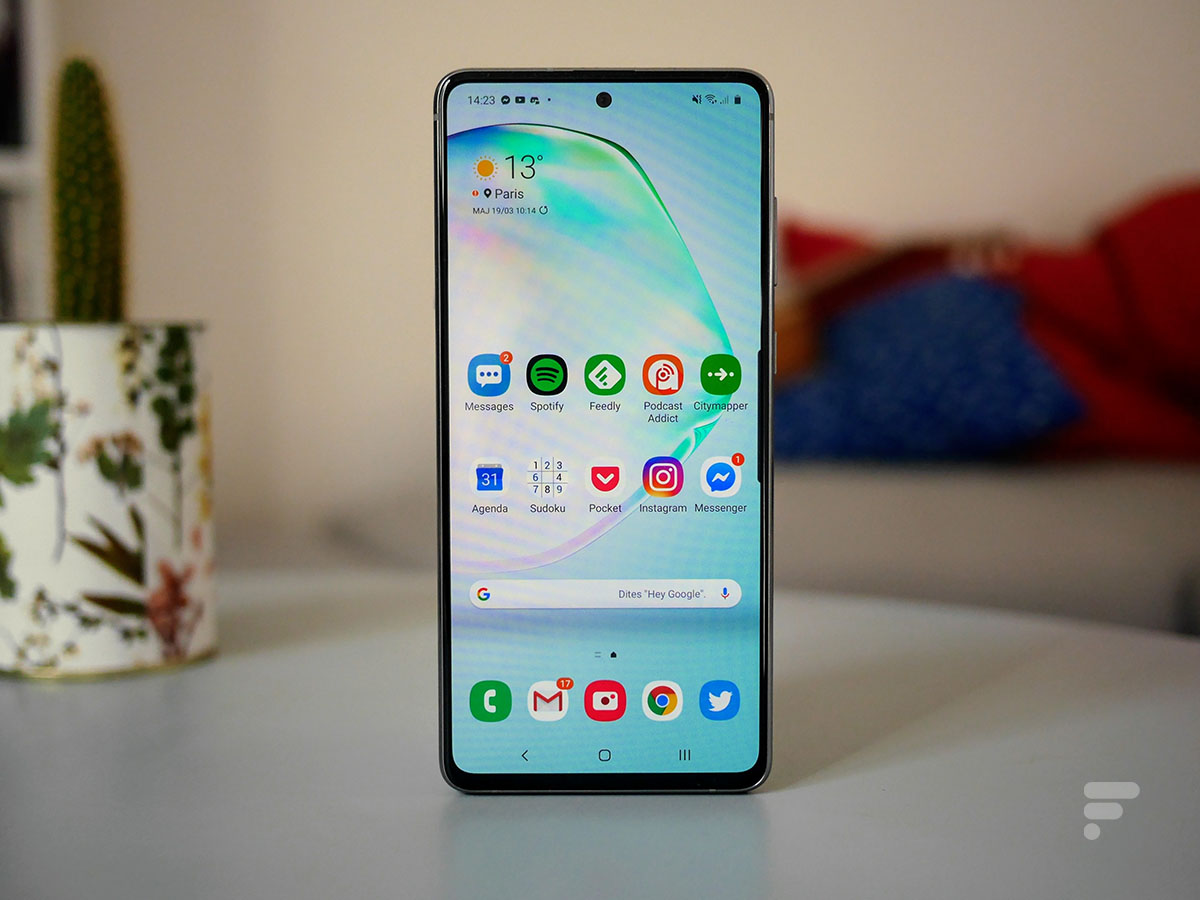
Let’s dwell a bit on the front. As we said, the Galaxy Note 10 Lite takes a format with a screen pierced at the top in the center. This is one of the characteristics of high-end models from Samsung. The Korean manufacturer had adopted this format in particular with the Galaxy A8S then the Galaxy S10 . However, it was not until Note 10 that the punch was centered. Here, the choice is rather well thought out and the small format of the punch does not really interfere with everyday life.
We will actually regret the relatively wide borders all around the screen with 4 mm at the top and on the sides and 5 mm at the bottom. Admittedly, the borders are similar on each side, but we are far from the borderless aspect proposed for example on the Galaxy Note 10. It must be said that unlike its big brother, the Samsung Galaxy Note 10 Lite does not offer a screen curved on the sides, but a classic flat slab.
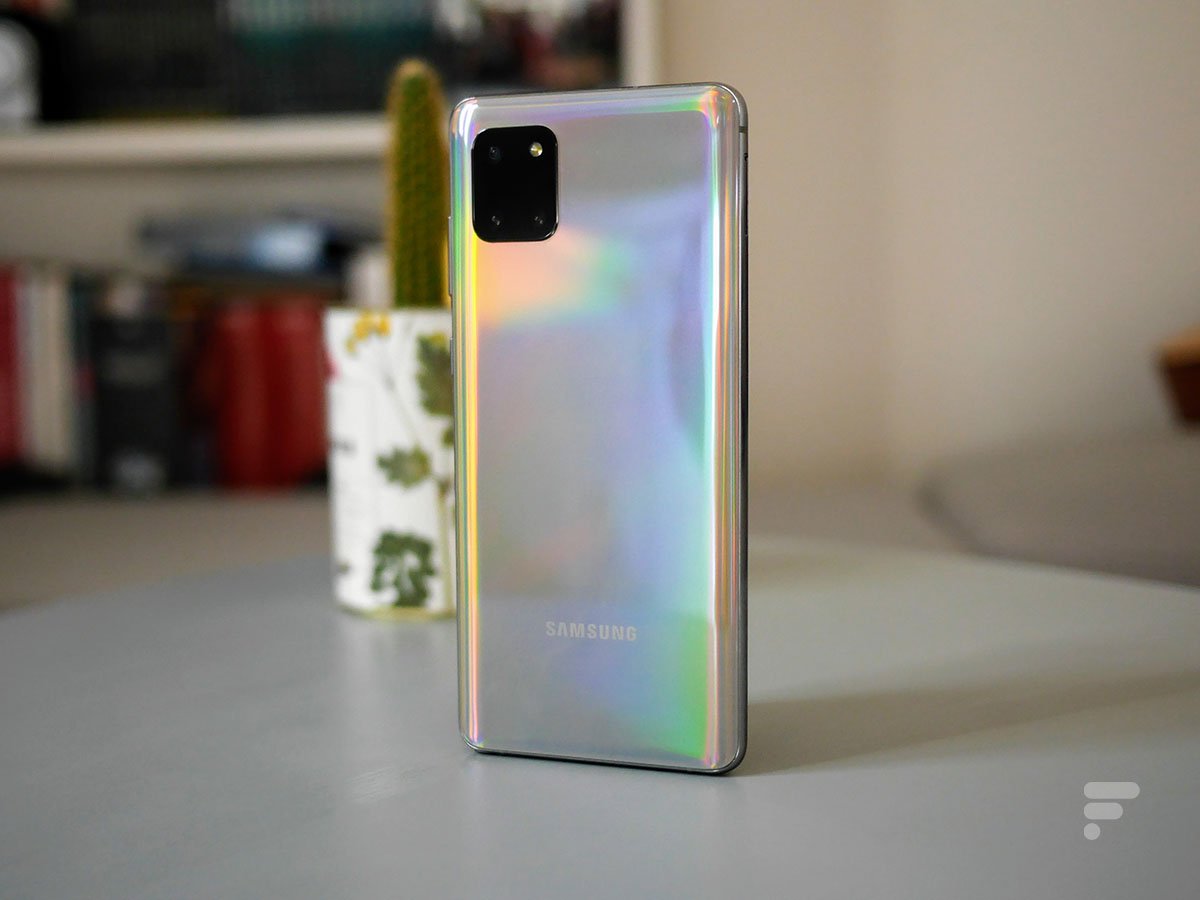
The back of the Samsung Galaxy Note 10 Lite
On the back, the Samsung Galaxy Note 10 Lite also uses the large photo module that we have seen on other recent Samsung devices. A black photo module that actually houses three cameras and the flash. It’s quite large, but nothing to do with the surface taken for example by the module of the Galaxy S20 Ultra. Above all, the photo module does not protrude too much from the back. In fact, you can use the smartphone lying flat on a table without any risk of it being wobbly. For the rest of the back surface, it is a plastic back with glass effect. The device is available in black, red or silver. It is this last model that we were able to test with its iridescent reflections of the most beautiful effect, but we will note a propensity of the device to capture fingerprints.
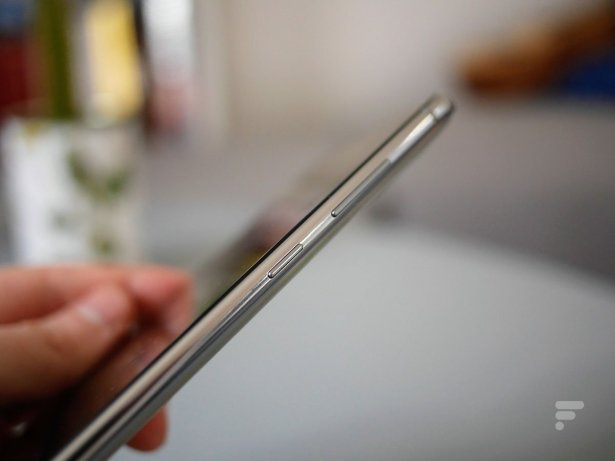
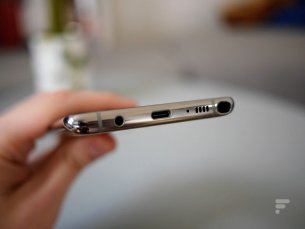

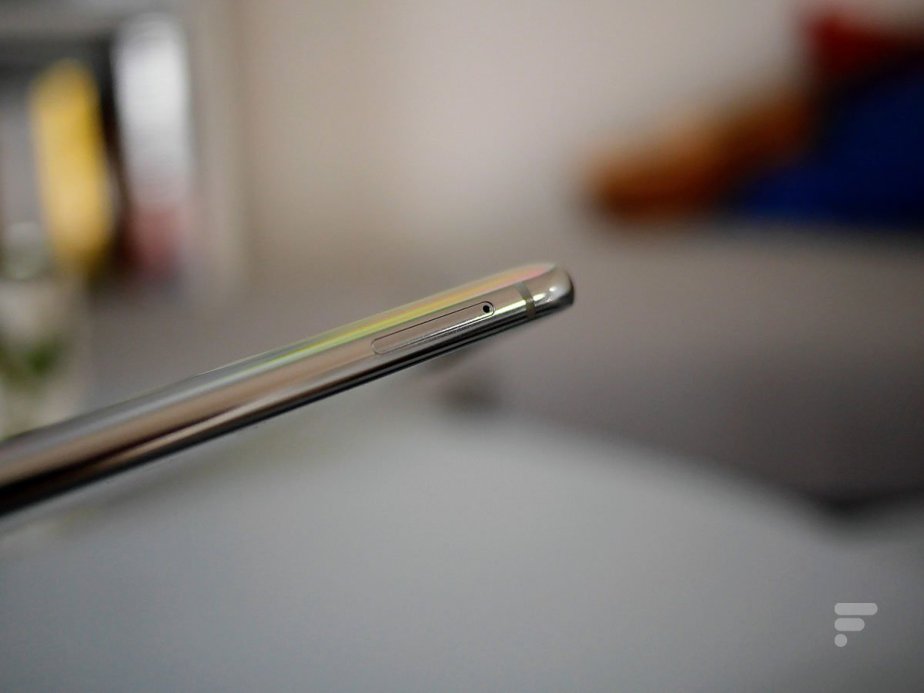
On the edges, we find the different volume and standby buttons on the right. Buttons the click of which however lacks a little confidence and which give a rather plastic effect to the smartphone. On the left, Samsung has integrated a hatch for two nano-SIM cards or a nano-SIM card and a microSD card. At the top, there is no plug or button. However, it is below that Samsung has integrated all of the connectors. We thus obviously find the USB-C socket as well as the headphone socket on the left and the speaker on the right.
Above all, it is on the lower edge that Samsung has integrated what makes the Galaxy Note 10 Lite a real Galaxy Note: a stylus. We will come back to this later in the software section, but, as with high-end models, it can be simply removed by pressing it.
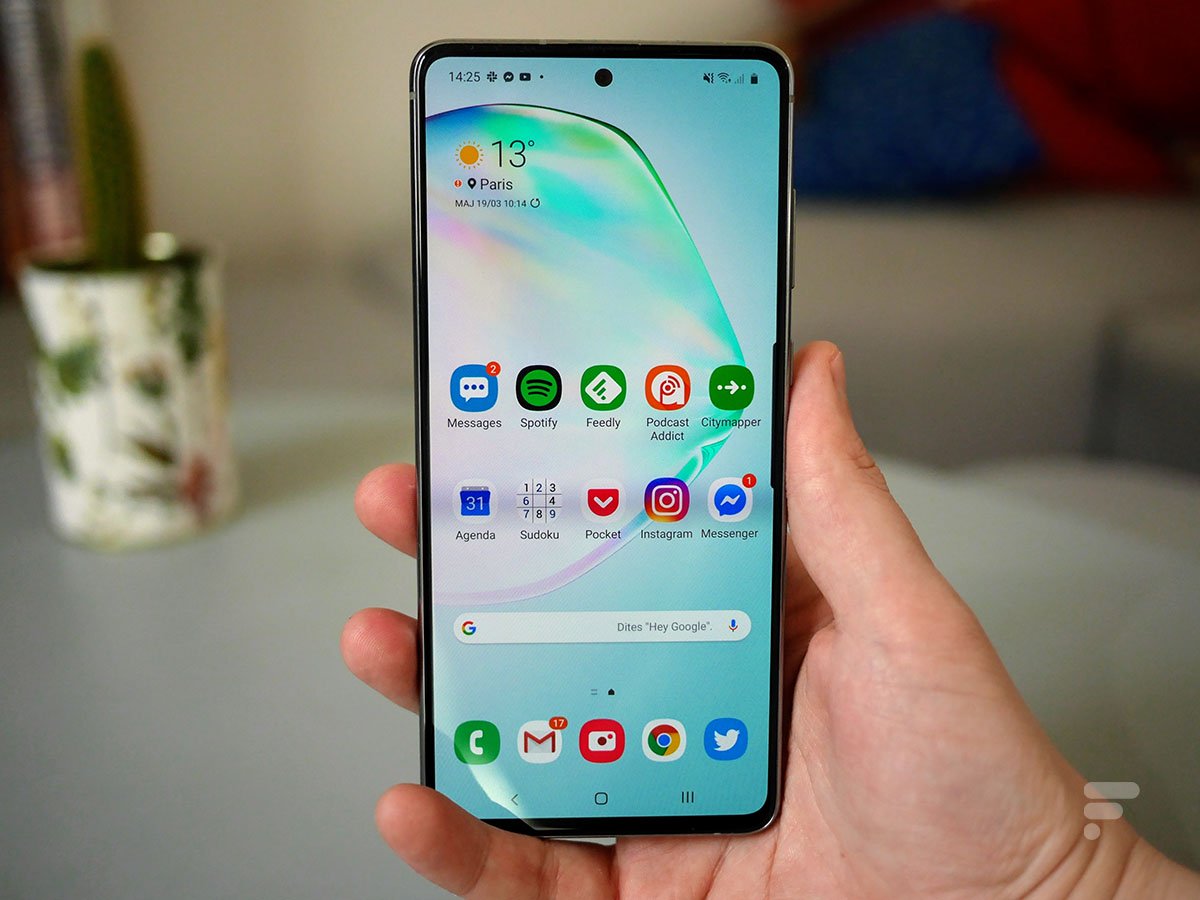
The Samsung Galaxy Note 10 Lite is an imposing smartphone
Overall, the Samsung Galaxy Note 10 Lite fits pretty well in the hand thanks to its rounded edges. It is however quite heavy with its 199 grams. Especially, because of its 6.7 inch screen stretched upwards enough, it will not be easy to handle it with one hand and it will be especially recommended for people used to using a smartphone with two hands. A use that makes all the more sense with the stylus. It should also be noted that the smartphone is not certified for its water resistance.
A VERY GOOD SCREEN
For the Galaxy Note 10 Lite screen, Samsung has integrated a 6.7-inch Super Amoled panel. As we have seen, it is flat and pierced at the top in the center. In fact, it is on paper the same screen as on the Galaxy A71 that we have already tested. We thus find the same diagonal, but also the same definition of 2400 × 1080 pixels at 20: 9 ratio with a density of 393 pixels per inch.
In use, the screen of the Samsung Galaxy Note 10 Lite is particularly bright, sufficient in any case to be able to view its default contents in direct sunlight without being bothered by light reflections. We will also note a screen configured by default with good colorimetry, without drawing towards blue as it is often the case, but with colors which can appear rather dull with the natural mode activated at the exit of the box. Oled obliges, the contrasts are infinitely deep and the black pixels remain well off.
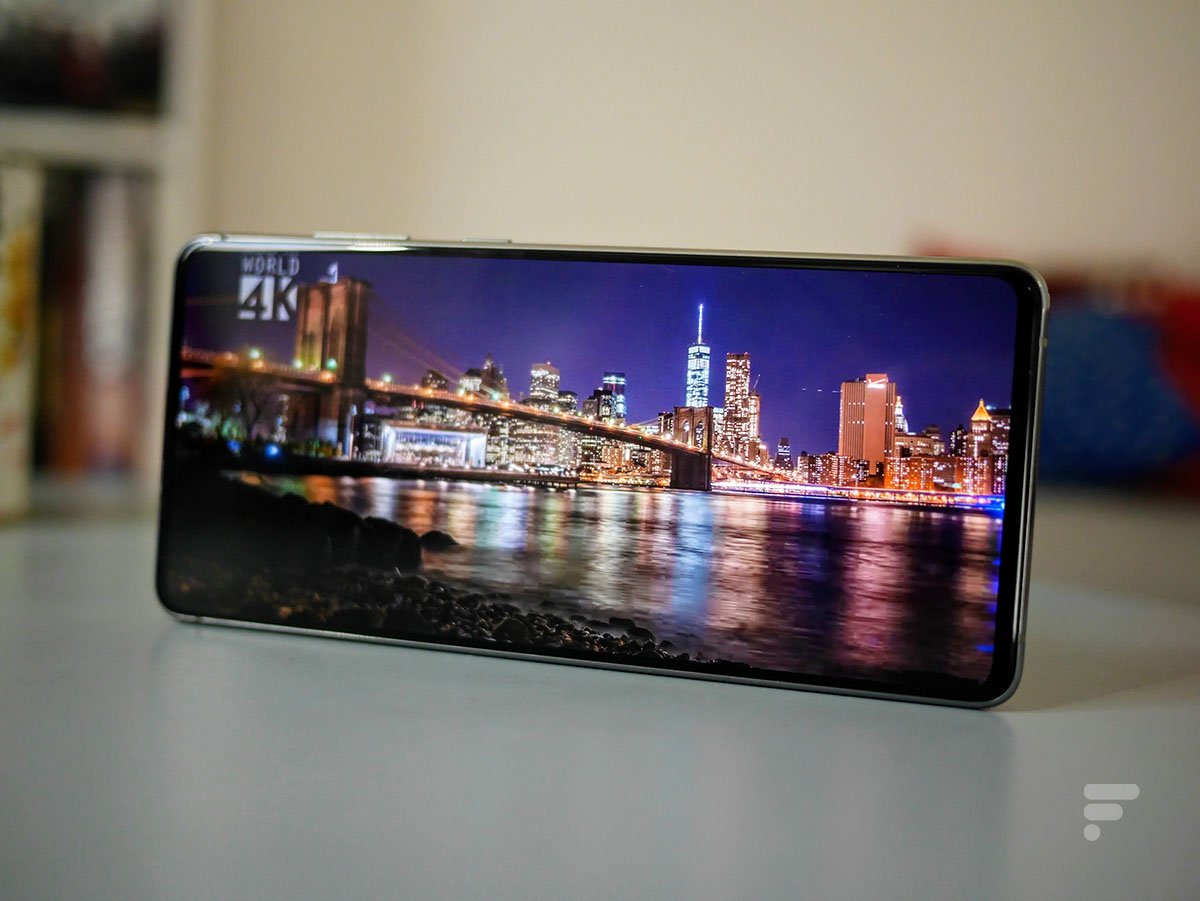
The screen of the Samsung Galaxy Note 10 Lite
Using Calman Ultimate software from Portrait Displays , we were able to measure a maximum brightness, in the default natural mode, at 560 cd / m². It is a very good brightness which will suffice in the overwhelming majority of cases. The default temperature is 6538K, which is close to perfection and 6500K of white sunlight. We can however regret a fairly limited color space by default with 120% of the sRGB spectrum covered, but only 80% of the DCI-P3 spectrum. The Delta E with this natural mode is however very good with an average of 3.95.
To try to cover a wider color space, without cooling the screen temperature too much, we made measurements with the vivid mode by moving the white balance cursor a notch towards the warm. Consequently, we are left with an average temperature of 6486K, again very good, and with coverage at 202% of the sRGB spectrum and 136% of the DCI-P3 spectrum. Only problem, it is the colorimetric respect which then fishes with this calibration, passing to a Delta E of 5.62.

The recommended screen setting for the Samsung Galaxy Note 10 Lite
Overall, the Galaxy Note 10 Lite still offers a very high quality screen that really does not suffer from any major defect. However, you will have to choose between excellent color fidelity or a larger color display for more vivid images.
A SOFTWARE INTERFACE WELL SUITED TO THE STYLUS
For the software part, the Galaxy Note 10 Lite embeds Android 10 with the One UI 2.0 interface from Samsung . As for security updates, at the time of this test, it was still taking advantage of the February 2020 patch.
I’m not going to dwell long on the main features of One UI in version 2.0, because we have already tested many smartphones taking advantage of this interface. In a few words, just know that this is a particularly complete interface with many customization parameters. It is thus possible to activate two types of gestural navigation, to modify the navigation keys at the bottom of the screen if you prefer this system, to activate a dark theme or to modify the home screen to be able to open the notification panel by swiping from any part of the screen.
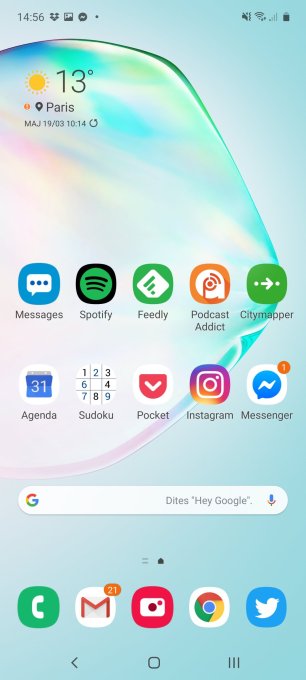
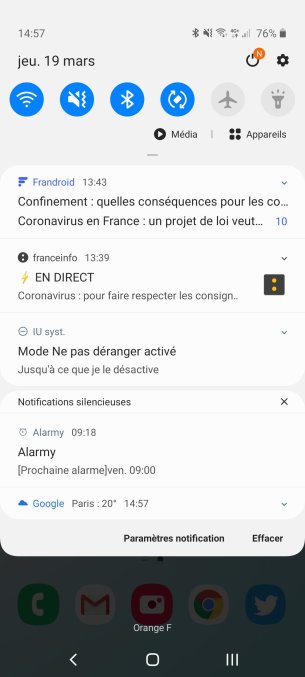
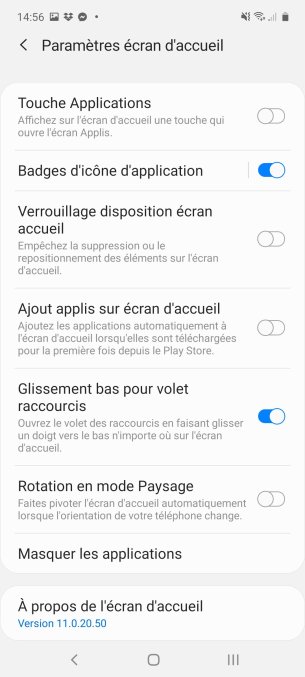
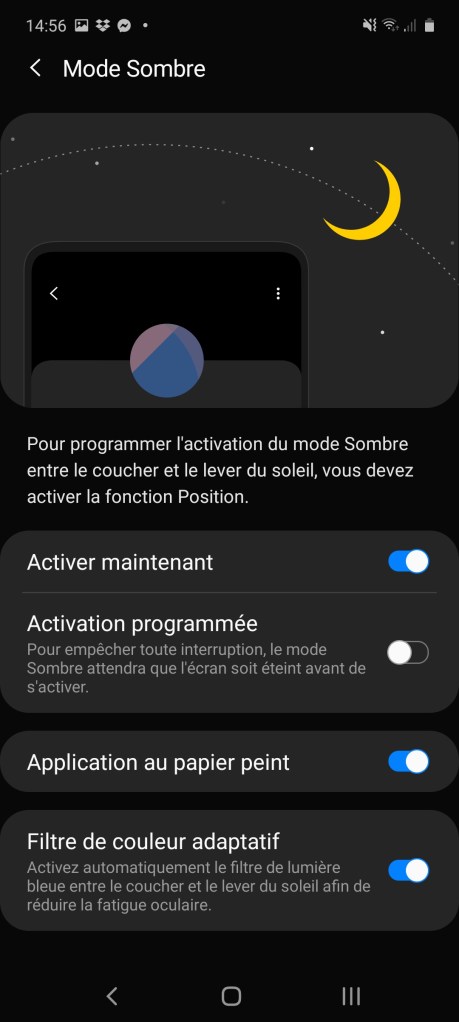
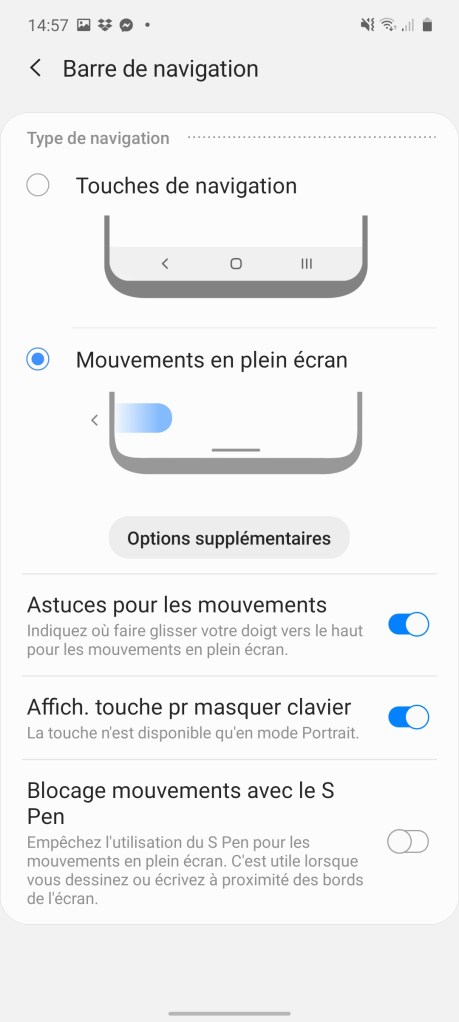
In terms of biometric security, the Samsung Galaxy Note 10 Lite integrates two systems. The facial recognition is ensured by the selfie camera in the punch. It is therefore not a 3D recognition as we can have on iPhone or on certain Android devices – Huawei Mate 30 Pro or Google Pixel 4 in mind. However, despite this lack of security, I did not manage to trick the smartphone by showing him photos of myself.
For the fingerprint sensor, it is integrated directly behind the Oled screen. However, if we could be happy that Samsung has positioned the reader high enough on the Galaxy S20, it is clear that the Korean manufacturer has returned to its bad habits on the Galaxy Note 10 Lite. You have to put your thumb a little low on the screen and the fingerprint reader unfortunately does not easily fall under your finger. Above all, as is often the case with Samsung, the detection of the fingerprint reader can be quite long, of the order of a second. It’s not bothersome once or twice, but in the long run it becomes quite frustrating.

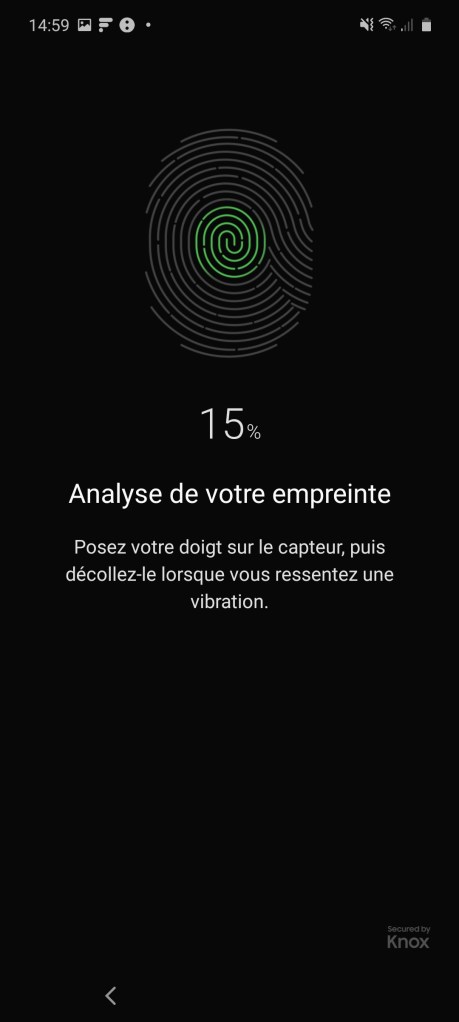
Finally, and this is the particularity of the Galaxy Note 10 Lite, it is a smartphone with an S Pen style. Logically, Samsung has therefore integrated a lot of software functions to take advantage of its stylus. By taking it out of the smartphone while it is in standby, it will for example be possible to take notes directly on the screen, notes that can be saved later. These notes are then saved to Samsung Notes and can be pinned to the always on screen or converted to a text file.
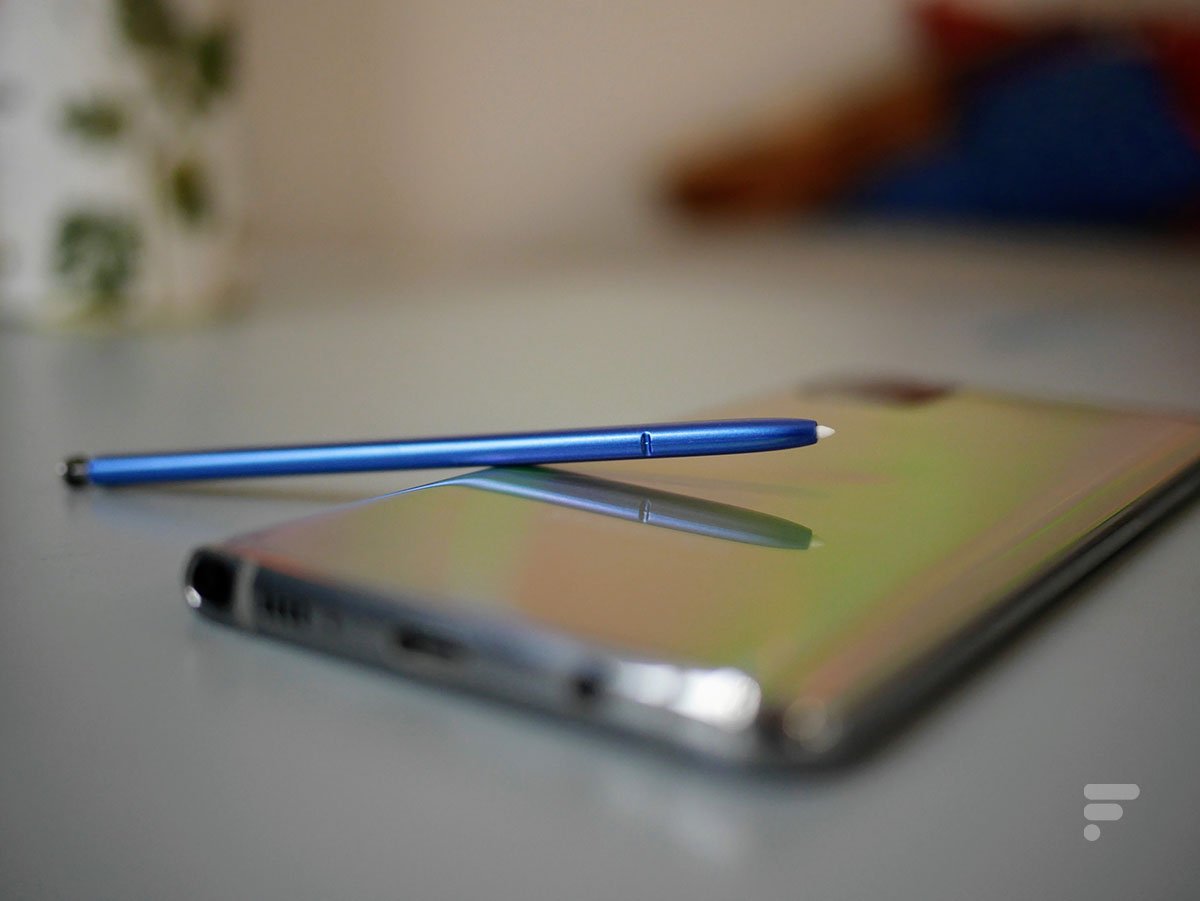
The Samsung Galaxy Note 10 Lite S Pen
The S Pen can also be used as a camera trigger. Convenient if you want to take a group photo without the stress of the trigger and its ten seconds of waiting to count. Here, you just need to press the button to take the picture, and double press to change the camera. The stylus can also be used at the discretion of application developers who can integrate specific functions for the S Pen. However, it should be noted that this is not the same stylus as on the Galaxy Note 10 and Note 10 Plus. Here, the stylus simply writes and has a button and the smartphone is not able to detect its slightest movements. It is therefore impossible to rotate the stylus to change the camera or to go up and down the stylus to adjust the volume.
However, these are quite incidental functions and that will not fail in the end for most users of the Galaxy Note range, as the S Pen is mainly used for taking notes and its remote control function with a button.
Finally, note that the Samsung Galaxy Note 10 Lite is indeed compatible with DRM Widevine at L1 level . The smartphone can therefore easily read Netflix, Molotov or myCanal content in Full HD.
EXCELLENT PERFORMANCE … IN 2018
The Samsung Galaxy Note 10 has the Exynos 9810 chip from Samsung. We are therefore far from the Exynos 9825 of the Galaxy Note 10 and Galaxy Note 10 Plus . A year and a half precisely. The Exynos 9810 is indeed the chip that had been launched by Samsung in February 2018 to equip the Samsung Galaxy S9 and S9 Plus . Without getting the latest high-end chip from Samsung, the Galaxy Note 10 Lite also does not have a mid-range SoC. It is actually a high-end processor… from two years ago.
To this Exynos 9810, Samsung backed 6 GB of RAM and 128 GB of storage, expandable by microSD card up to 1 TB.
In use, the Samsung Galaxy Note 10 Lite of course suffers from no daily slowdown. The smartphone is doing very well for web browsing and classic 2D games. It also does not trouble managing multitasking and moving from one application to another.
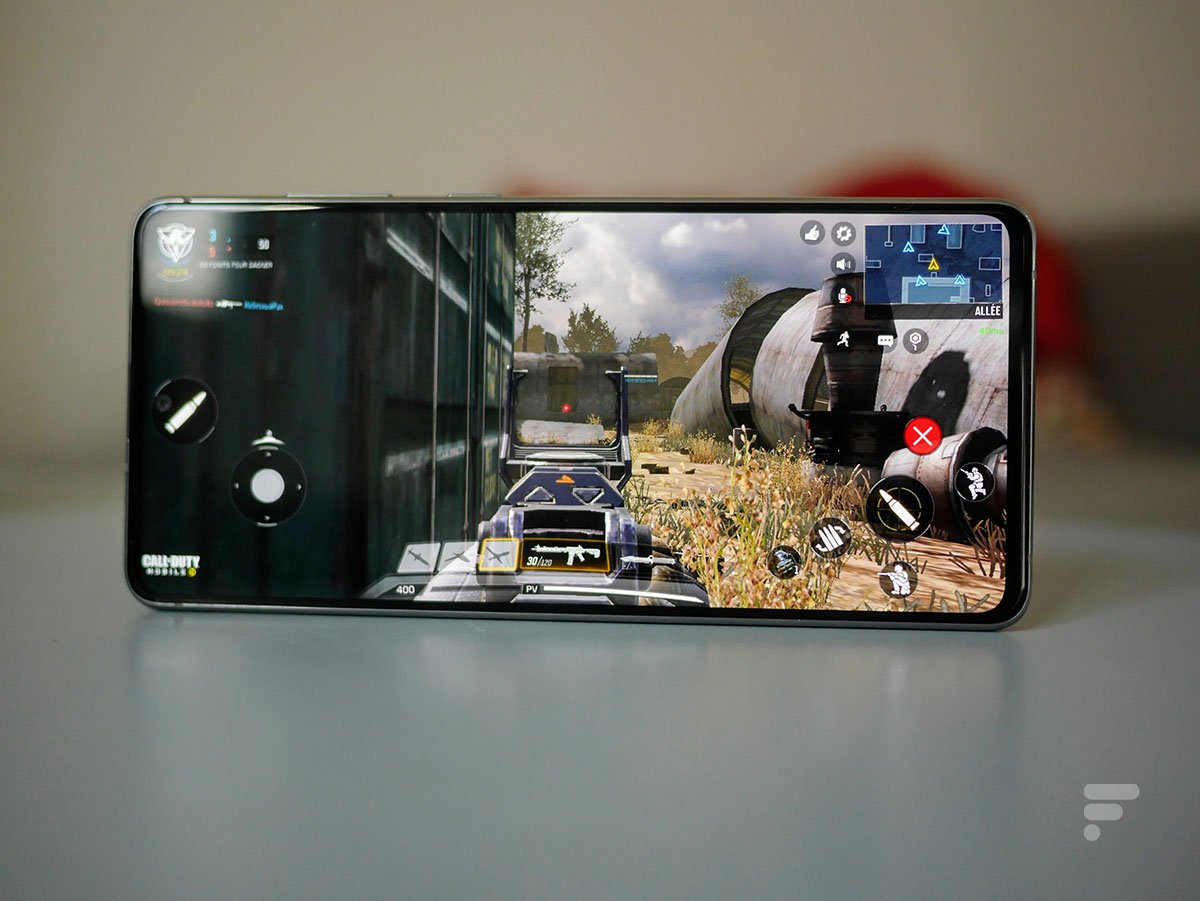
Call of Duty Mobile on the Samsung Galaxy Note 10 Lite
By default, Call of Duty Mobile launches with the graphics and frame rate configured as medium. However, the game does not suffer from any slowdown by increasing the two parameters to the next higher level, high. The Galaxy Note 10 Lite is also doing quite well in terms of heating. Fortnitelaunches meanwhile with a refresh rate at 30 frames per second, high graphics and 75% 3D resolution. The 60 frames per second are unfortunately not offered on the device, but I was able to go up to 100% 3D resolution. With these parameters, the game stays around 29 to 30 FPS most of the time, but, in the more demanding phases when you rotate 360 ° for example, can drop punctually below 20 FPS. We also note a heating which is not annoying at the top of the device, but which is very noticeable.
In order to compare the performance of the Samsung Galaxy Note 10 to other smartphones sold at the same price, we subjected it to several benchmarks. We then compared its results to those of the OnePlus 7T , Huawei P30 Pro , Oppo Reno 10x Zoom and Galaxy Note 10.
| Samsung Galaxy Note 10 Lite | Samsung Galaxy Note 10 (FHD +) | OnePlus 7T | Oppo Reno 10x Zoom | Huawei P30 Pro | |
|---|---|---|---|---|---|
| SoC | Exynos 9810 | Exynos 9825 | S855 + | S855 | Kirin 980 |
| AnTuTu 8 | 336,235 | nc | 444,287 | nc | nc |
| PCMark 2.0 | 5,984 | 7,421 | 10,476 | 11,609 | 9,173 |
| 3DMark Slingshot Extreme | 3,947 | 4,872 | 6,294 | 5,639 | 4,243 |
| 3DMark Slingshot Extreme Graphics | 4,277 | 5,659 | 7,154 | 6,369 | 4,374 |
| 3DMark Slingshot Extreme Physics | 3,109 | 3,276 | 4,431 | 4,025 | 3,841 |
| GFXBench Aztec Vulkan High | 14/11 FPS | 19/15 FPS | 25/18 FPS | 24/16 FPS | 16/13 FPS |
| GFXBench Car Chase (onscreen / offscreen) | 25/30 FPS | 32/33 FPS | 37/46 FPS | 37/42 FPS | 29/33 FPS |
| GFXBench Manhattan 3.0 (onscreen / offscreen) | 57/75 FPS | 59/86 FPS | 59/97 FPS | 61/101 FPS | 59/89 FPS |
| Sequential read / write | 702/190 MB / s | 1,518 / 590 MB / s | 1400/221 MB / s | 814/262 MB / s | 903/232 MB / s |
| Random read / write | 27.7k / 27.8k MB / s | 46.6k / 48k IOPS | 42k / 6.9k IOPS | 39.9k / 6.1k IOPS | 43.4k / 6.6k IOPS |
Logically, although all its devices are offered at a price close to that of the Galaxy Note 10 Lite, the latest from Samsung has a hard time going the distance. It must be said that in this price segment, many smartphones are equipped with the latest high-end chips or, failing that, those of last year. In comparison, the Galaxy Note 10 Lite is a year behind in terms of performance.
GOOD PHOTO VERSATILITY… PROVIDED YOU HAVE LIGHT
The Samsung Galaxy S10 Lite has a triple photo module on the back with three 12 megapixel modules with:
- Top left, an ultra wide-angle 12 megapixel camera, equivalent to 13 mm (f / 2.2)
- Bottom left, a 12-megapixel wide-angle camera, equivalent to 26 mm (f / 1.7)
- Bottom right, a 12 megapixel telephoto lens, 52 mm equivalent (f / 2.4)

The camera of the Samsung Galaxy Note 10 Lite
Note that, as is often the case on smartphones, when the brightness is not sufficient to use the telephoto camera, it is the main photo module, with a lens with a larger aperture, which will take over by performing a hybrid zoom. On the following galleries, I was able to use the three photo modules of the Galaxy Note 10 Lite in different conditions, from ultra wide-angle to telephoto:
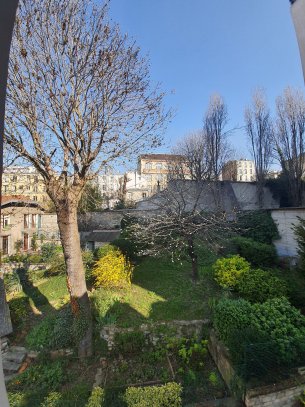
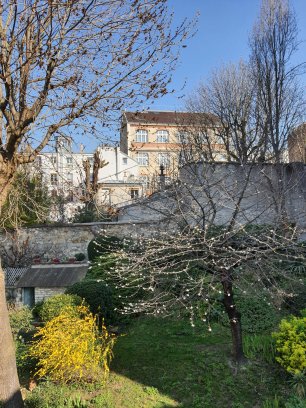
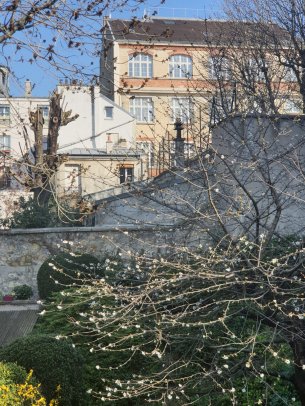
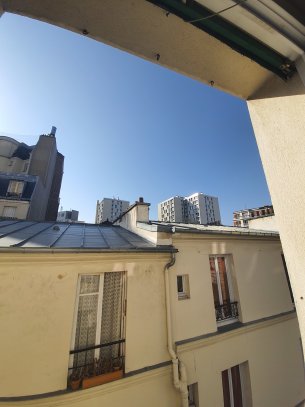
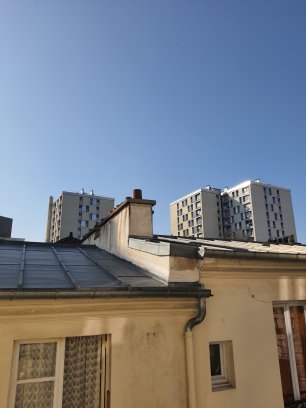
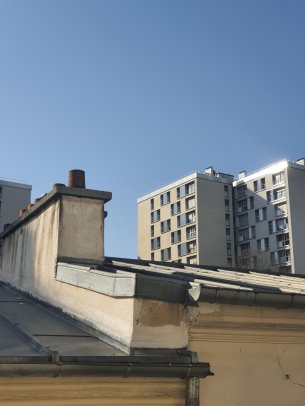
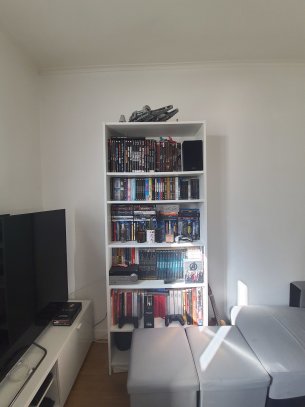


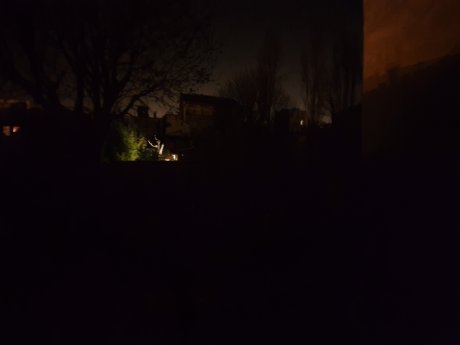
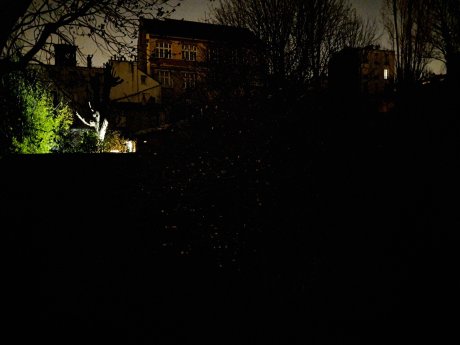
You will note that the last series contains only two photos, the ultra wide-angle and the wide-angle, and for good reason: the photos were captured with the night mode. However, the Note 10 Lite does not allow you to take photos in night mode with the telephoto lens. Logical since, as we saw a little earlier, this camera is too dim and is often replaced by the main module when the light runs out.
Overall, however, there is good consistency in colorimetry. There is no major difference in color management from one camera to another. On the outdoor stages, in broad daylight, we also note that the three modules are doing well and, in automatic mode with activated AI, manage to manage the strong dynamic ranges with well-exposed shaded areas without giving a sky too white. We can however emphasize the propensity of the smartphone to offer fairly saturated colors and a fairly warm white balance, but this is a habit at Samsung.
In low light and indoors, however, we can note a significant lack of brightness on the three devices. Indoors, on the photo of the shelves, the details are there, but the photo appears to be veiled, especially on the telephoto lens. As if the Galaxy Note 10 Lite had superimposed a white filter over the image to artificially increase the exposure. Pity. At night, and despite the night shot mode activated, it is simply unusable. Too bad for a smartphone at 600 euros when many competing models sold at the same price do better.
Note also that the Samsung Galaxy Note 10 Lite can take pictures in portrait mode. Unfortunately, confinement requires, I had to do with the means on board to test it, that is to say with my cat, objects or a photo of me by turning the smartphone over. Note that Samsung allows you to adjust the background blur a priori, but it is also possible to modify it after shooting. In addition, portrait mode is available with two lenses: wide-angle and telephoto.


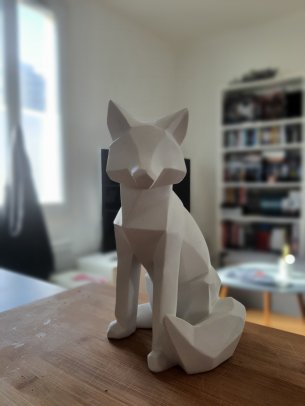
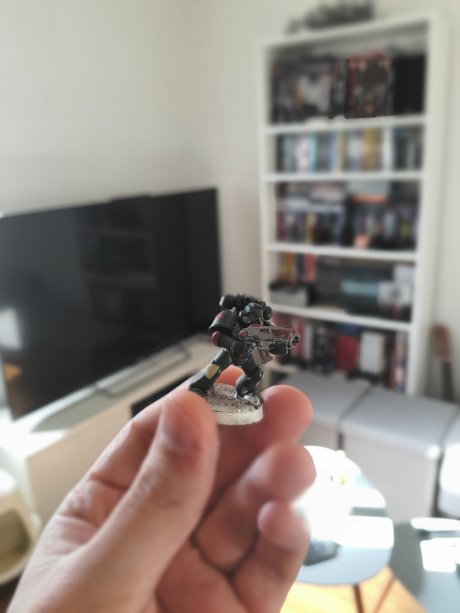

Overall, the Galaxy Note 10 Lite does well on objects, but this is not surprising, since the contours are better defined and more predictable than on a human face. On my cat on the other hand, the smartphone has much more difficulty in neatly trimming the hairs and its silhouette seems particularly smoothed. The same goes for my hair on the last picture which looks well straightened.
For selfies, the Samsung Galaxy Note 10 Lite incorporates a 32-megapixel sensor on the front. It also allows you to take advantage of portrait mode, but on top of that – and despite the unique objective for selfies – it is possible to modify the field of vision. We can thus move from a conventional wide-angle equivalent 25 mm to a slightly tighter digital zoom, equivalent 31 mm. Obviously, this is a digital zoom and, to take advantage of all 32 megapixels of the camera, it will be better to use the widest field.




Overall, the selfie module is very good, with very sharp shots and good sharpness. Even against the light, the smartphone easily manages to manage the high dynamic ranges, at least when you are in classic mode. In portrait mode, on the other hand, the device will again tend to blur the hair randomly and to smooth the contours of the face too much.
Note also that the Samsung Galaxy Note 10 Lite is capable of shooting in 4K at 60 FPS without stabilization with the main photo module – in Full HD / 60 FPS or 4K / 30FPS with digital stabilization – and in 4K at 30 FPS for selfies.
COMFORTABLE AUTONOMY
The Samsung Galaxy Note 10 Lite is equipped with a 4500 mAh battery. In use, I was able to use the smartphone for two consecutive days without too many problems, but with fairly moderate use. That said, on the first two days, I was able to use the device, with the screen on, for almost seven hours. On another session, I was able to use the Note 10 Lite for two and a half days before it fell, at 15% battery. During these 50 hours, however, I only used the device with the screen on for 4:30.
On our personalized ViSer autonomy test, it took 10.59 hours for the Galaxy Note 10 Lite before switching from a 100% charged battery to only 10% charge. It’s a little worse than the Galaxy A51, but much better than the results of the Galaxy S20 Plus, with a battery of the same capacity and which will have lasted an hour less, at 9:40 a.m.
For recharging, Samsung provides with its Galaxy Note 10 Lite a 25W charger (9V, 2.77A). Enough to recover 80% battery in one hour and have a full charge of 8 to 100% in 1 hour 19 minutes. The smartphone is however not compatible with Qi wireless charging.
SAMSUNG GALAXY NOTE 10 LITE NETWORK AND COMMUNICATION
The Samsung Galaxy Note 10 Lite is compatible with all 4G frequencies used by operators in France, the bands B 1 (2100 MHz), B3 (1800), B7 (2600 MHz), B20 (800 MHz) and B28 ( 700 MHz). The smartphone is however not intended to work with 5G .
On the Wi-Fi side, the Note 10 Lite benefits from Wi-Fi 5 (802.11 a / b / g / n / ac), but not from Wi-Fi 6. It is compatible with 2.4 and 5 GHz networks . The smartphone also benefits from Bluetooth 5.0 and NFC. Regarding geolocation, it is provided by GPS, Galileo, Glonass and Beidou.
To go further
The best operator in France
Finally, note that the call quality is not as good as that of premium smartphones. In containment, I used road traffic sounds from a YouTube video launched on speakers. My correspondent did indeed have them in the background when I spoke, even if they were canceled when I stopped chatting. My voice was however well transcribed for him.
PRICE AND AVAILABILITY OF THE SAMSUNG GALAXY NOTE 10 LITE
The Samsung Galaxy Note 10 Lite has been available since last January. The smartphone was launched in France at a price of 609 euros with three colors available: black, silver and red.Where to buy the SAMSUNG GALAXY NOTE 10 LITE at the best price?
